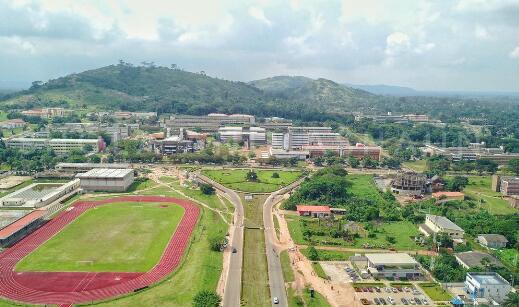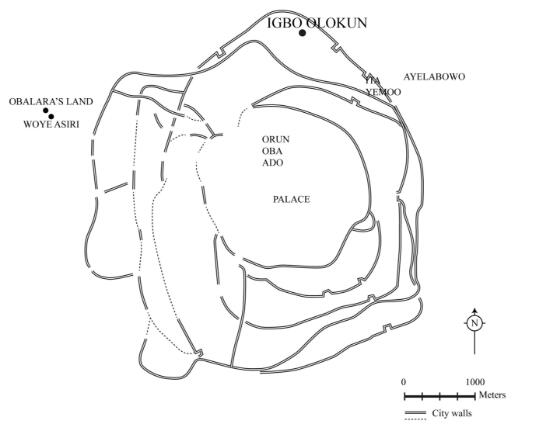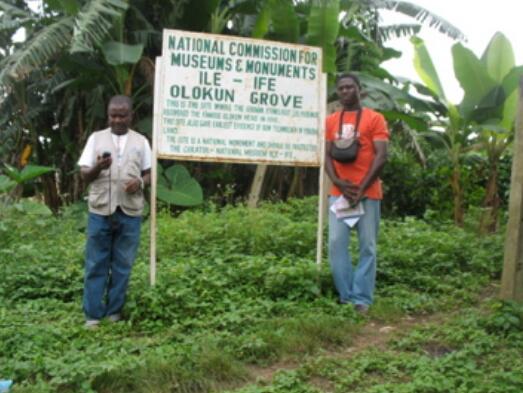2019 SAF Discovery Awards|Archaeology of Glass in Sub-Saharan Africa
Although the youngest of the materials invented by human, glass is one of the most adorable and valuable objects in antiquity. The attribution to its striking characteristics that were not seen in other earlier materials such as its translucency, the colour variation, and the luster nature among others may be responsible for its valuation. Following the discovery of the first man-made glass from Mesopotamia around Syria and Iraq at about approximately 2500 BC, substantial scholarships have been devoted to the region and its environs. These efforts led to the encountering of more glass making centers in the Near East including Bet She’ arim, Tell Brak, Tell el-Amarna, Al-Raqqa among others. The first glass was made with two major raw materials: siliceous material flux with halophytic plant. However, as the knowledge of glass develop further and spread, different and new raw materials were introduced, and the composition of glass was changing from one region to another within a temporal framework. Hence natron or mineral soda glass was “invented” at about 800 BC in the Islamic world, the Roman/medieval European wood ash glass at around 800 AD, the Chinese lead-barium glass at about 1000 BC, and the south Asia natron soda-alumina glass approximately first century BC. Where is sub-Saharan Africa in this longe duree of the development of glass technology? Interestingly, glass of all these compositional groups have been found from archaeological contexts across Sub-Saharan Africa with the earliest (in form of bead) being of Persian origin dated to 400-600 BC at Nin-Bere in modern-day Mali. The occurrence of glass on the sub-African continent has strongly established regional and trans-continental interaction with the outside world rather than an indication of indigenous glass making. However, a couple of secondary glass-working workshops where the imported glass was reworked and recycled have been identified across sub-Saharan Africa. An example of early evidence of glass-working came from Chibuene dated to 6th-17th century AD. Despite this evidence of glass working, the question remains, was there primary glassmaking in Sub-Saharan Africa? Where does sub-Saharan Africa fit in this larger picture of the development and production of glass? The discovery at Ile-Ife, southwest Nigeria addresses these questions.
Ile-Ife in Context: Geography and Archaeology
Ile-Ife is in the forest belt of southwest Nigeria. It lies at the center of several hill and ridge complexes which leads to its topography being described as “bowl” shape. The location of Ile-Ife on the plane at the foot of the hills and ridges makes it susceptible to erosion because the runoff from the hill sweeps through the city before it drains into the tributaries of one of the major rivers that traverse Ile-Ife. By implication, the soils at foot of the hills and ridges are rich in nutrient and suitable for farming, archaeological evidence has suggested that, perhaps, early farming communities must have congregated at the hill foots.

Archaeologically, Ile-Ife is famous for its extraordinary artworks in copper alloy casting, terracotta figurines, and stone carving. The naturalism of Ile-Ife artworks and the intricacies of their production allude to the prowess of their makers on the one hand and match them up with other well-known sculpting traditions across the globe from ancient Egypt, Nubia, to the classic Greek and Roman arts. Several archaeological and art historical evidence pointed at the 12th through 15th century AD as the peak of early Ife civilization – also known as “classical era”. In addition to the proliferation of craft specialization in ceramic making, copper alloy casting, iron making, complex city planning and construction of potsherd pavements, and glass and glass bead making, the classical era is also characterized by complex urban living with centralized political system. Thus, Ile-Ife developed as a regional power that was at the center of the political and economic affairs in the region – status it held until late 15th century AD.
While considerable attention has been on the art industry in early Ile-Ife with no ambiguity regarding her capacity to develop or engage in sophisticated technologies, study of the glass industry has received less traction. Although glass-related objects and the idea of possible viable glass industry in early Ile-Ife has been around for over a century, the whole complex of the technology is yet to be fully investigated. This neglect may be, in part, due to the fact that a narrative that excluded Sub-Sahara African in the studies of ancient glass making has been privileged in the archaeology of the Sub-continent. Furthermore, the occurrence of glass in Ile-Ife, particularly, at Igbo Olokun is interpreted to represent secondary glass working.
Igbo Olokun, the site this project, is popularly referred to in the literature as Olokun grove. It is located in the northern sector of the city of Ile-Ife. The site has been known to the local inhabitants for decades as probably a workshop of glassmaking or working of some sort because of the abundant glass materials that litter the surface of the site. Leo Frobenius, the German who visited Ile-Ife in 1910, visited the site and paid the locals to dig for him at the site as well as in other groves across the city. He reported encountering several glazed vessels, which are now known to be glass crucible, as well as cullet, and glass beads. Bernard Fagg, the colonial archaeologist and the first director of the Nigerian Department of Antiquity, excavated at Igbo Olokun in 1950s. In early 1960s, Frank Williett, a British Archaeologist who was invited to excavate at Ita Yemoo in 1957, also conducted excavations at Igbo Olokun in late 1950s or early 1960s. Omotosho Eluyemi was the first Nigerian archaeologist that worked at the site. He conducted a series of archaeological investigations at Igbo Olokun between late 1970s and 1980s. Despite the abundance of glass artifacts that may help us understand the technology of glass in ancient Ile-Ife, all the previous investigations at the site focused mostly on artworks and reported little or nothing on the glass industry. However, only Eluyemi reported on the glass materials from Igbo Olokun, howbeit limited. Eluyemi also championed the narrative of possible indigenous glassmaking in classic Ile-Ife. His voice was overshadowed because of lack of enough evidence to substantiate this claim. Today, Igbo Olokun, is a monument site under the auspices of Ife Museum, which is a division of the Nigerian National Commission for Museums and Monuments (NCMM).
The Archaeology of Glass Project: Excavations at Igbo Olokun Ile-Ife
Igbo Olokun has proved worthwhile for the study of glass production in classic Ile-Ife. Hence, our archaeological exploration at Igbo-Olokun and its environs commenced in 2010. Since inception of the project it has benefited a lot from several organizations and institution for funding. These include Rice University’s Social Science Research Institute (SSRI), Corning Museum of Glass, Association of the History of Glass (AHG), UCL Qatar, McDonald Institute of Archaeological Research – University of Cambridge, Leventis Foundation, Cyprus Institute, Cambridge-Africa ALBORADA and the British Museum. These institutions and organizations have contributed immensely to the progress and success of the research. I should also state that local institutions such as the Department of Archaeology & Anthropology, University of Ibadan, and Obafemi Awolowo University’s Natural History Museum (NHM) have been of tremendous assistance. We have also received unalloyed support from the local community as well as several individuals who have offered valuable services and intellectual contributions over the course of the project.

Our activities at the site have centered on reconnaissance survey and excavations. Between 2010 and 2017 we have excavated a total of 15 units within the site amounting to an area of approximately 31 square meters. While some of the units concentrated within a location at the site to understand the spatial organization, others were sunk in different locations across the site to delineate the extent of the activity area and to have a better sense of the depth of the cultural deposition. The cultural layer varies from 70 cm to 135 cm in the excavated units, which is underlaid by a yellowish-red lateritic soil with heavy mica content. These characteristics of the yellowish-red soil match the sub-soil in the region. In few cases we dug into the laterite layer, but no artifact was recovered. In many other cases we did not dig into the laterite layer as it suggest an initial industrial surface where activities were carried out. We uncovered three conjoined pits and another with a narrow channel. We reached the bottom of one of the conjoined pits at about 1.1 meters. The wall of the pit is straight with a flat bottom. One of the conjoined pits is shallower with the bottom reached about 50cm from the surface of the laterite floor. A charcoal sample from the bottom of the shallow gave a date of 11th century AD. We could not get to the bottom of the third pits. The question that came up often regarding the pits is that can they be identified as part of the furnaces at the site? Although there is no precedent for an early primary glass-making furnace in sub-Saharan Africa to help with the comparison of furnaces, the structure and arrangement of the pits suggest that they are likely to be ruins of the infrastructure for glass making and working at the site.
The cultural deposit at Igbo Olokun is significantly rich in industrial-related materials including crucible fragments, glass beads, glass wasters, potsherds, and other ceramic materials. These artifacts are common to both the cultural deposit overlaying the laterite and the pits. The abundance and variety of the materials recovered from our excavations at Igbo Olokun allow different form of analysis to investigate the source(s) of the glass, raw materials used, and the technology of production among others. Dr. Laure Dussubieux of the Field Museum, Chicago, has been in-charge of LA-ICP-MS analysis of the glass materials. Over 120 glass samples including wasters, glass beads, and crucible glass have been analyzed. Professor Thilo Rehren has been helpful in working on the crucibles and other production-related materials with the use of Optical Microscope and SEM-EDS to understand the microstructure of the crucible fabric and the attached inside glass and outer glaze as well as to determine their chemical constituent. With the generous funding from the Qatar Foundation, we were able to analyze some samples at the material science laboratory of the University College London, Doha Qatar. More samples are being analyzed at the material science laboratory facility of the Science and Technology in Archaeology and Culture Research Centre (STARC) of the Cyprus Institute – thanks to Leventis Foundation for funding this part of the project. Results of these analyses have provided us with an invaluable and overwhelming evidence to support the argument for the first discovery of a primary glassmaking industry in Sub-Saharan. I will discuss the results in the next section.
Crucibles, Glass Beads, Production Waste, and Semi-finished Glass
Materials of different categories that indicate industrial activities at Igbo Olokun were retrieved during our excavations. Over 1,500 crucible fragments were recovered. The assemblage represents different parts of the crucible vessels: rim, body, and base. The crucibles are either oval or barrel with height varying from 16 cm to 35 cm. The wall thickness range between 1.5 cm and 4 cm with the bottom being the thickest part of the crucibles. The most conspicuous element of the crucible is the inlay of glass on the interior. The color of the inner glass includes shades of blue and green, red, and colorless. Blue and green are the most common color among the inner glass. We have been able to demonstrate that the crucibles were technically designed for specific use in high heat activity. The high concentration of alumina in the crucible clay attests to their refractory nature. Thus, the crucible would have withstood temperature above 1300OC without soften. Most of the crucibles are lidded as fragments of lids were also recovered. The lids are hemispherical in shape with three holes on the upper part, which would have been used for inserting iron rod to lift the lid.
Over 20,000 glass beads have been retrieved from the excavations at Igbo Olokun. The uniqueness of the glass bead assemblage is not in the quantity but in the varieties of categories therein, which include finished and unfinished beads. The colors of the glass beads match that of the crucible glass except for yellow, which is only present among the beads but not seen in the crucible. Most of the beads are monochrome with blue being the most common followed by green. The polychrome beads are mostly striped. A different group among the polychrome is a group I called “colorless coated red.” This group consists of beads of a colorless core with red coating on the exterior. There are basically three shape categories discernible in the assemblage: cylindrical, oblate, and tubular. The glass beads are extremely small most of which are less than 5mm. This tiny nature of the beads makes them visually comparable to the so-called “seed bead,” but they are chemically different. Like the glass beads and the crucible glass, blue is the commonest color among the production debris recovered from the excavations. Hence, over 4 kilograms of glass wastes were recovered. Classification of the waste assemblage reveals that they are not only connected to the glass bead assemblage but also clearly indicated the chaine operatorie of glass bead making at Igbo Olokun. Compositional analysis further established the connection among these categories of finds.

Semi-finished glass is one of the strongest evidence of glassmaking in an archaeological site. No archaeological site in Sub-Saharan African has yielded evidence of semi-finished glass. In fact, only a few workshops yielded evidence of semi-finished glass in Late Bronze Age Egypt. During our early 2017 investigation, funded by AHG, aimed at studying materials earlier excavated or collected at Igbo Olokun curated in the storage facility of the NHM, we encountered a piece of crucible base with a chunky substance stick to the bottom. Examination of the substance and its attributes clearly suggest to us that it is a chunk of semi-finished glass. It is brittle in texture with lots of bubbles. Preliminary microscopic and backscatter image examination, as well as EDS analysis, show that the matrix is heterogenous with the presence of feldspar, wollastonite, and cobalt-rich phases with significant unmelted quartz grains. These phases indicate an unfinished process.
Why is the Evidence of Glassmaking in Early Ile-Ife a Unique Discovery?
To answer the above question, we must first ask whether there was primary glass production in the first place or not, and what are the evidence. The first way is to determine what kind of glass was being produced at Igbo Olokun. As mentioned earlier, we have chemically analyzed over 100 glass samples, which include crucible glass, glass beads, and glass debris. The analysis shows that the glass is high in alumina with low sodium and manganese. The low concentration of sodium and manganese suggests that the glass is neither of the Islamic soda-lime nor the medieval European wood-ash glass origin. A group with high lime, high alumina (HLHA) is dominant representing over 85% of the analyzed samples. Another group with low lime, high alumina (LLHA) is also present. There is a third group, low lime moderate alumina (LLMA), which appears to be insignificant. These groups are distinguishable by colors such that shades of blue, green, and colorless are of the HLHA and red and yellow are mostly of the LLHA, and rarely of the LLMA. These compositional groups are recognizable in the glass beads, crucible glass and the debris suggesting that they all belong to the same glassmaking tradition. The composition of the HLHA and LLHA glass is consistent with the combination of feldspar rich pegmatite and snail shell. A comparison of the chemical composition of Ile-Ife HLHA glass with the geological component in the region reveals that the geology supports such a chemical signature. Therefore, Ile-Ife glass is a product of local recipes. James Lankton, Akin Ige, and Thilo Rehren were the first to identify the HLHA group among an assemblage of Ile-Ife glass beads analyzed. Their work centered on unprovenanced museum collection and samples collected or purchased at Ile-Ife. However, they were able to recognize the uniqueness of the HLHA glass among the known ancient glass compositional groups from across the globe. They conclude that the HLHA glass must have been locally made within or near Ile-Ife. This project has provided archaeological evidence to firmly ascribe this glass technology to Ile-Ife with the workshop located at Igbo Olokun. This site was exclusively dedicated to the production of the HLHA glass.
The crucibles at Igbo Olokun were used in both glass making and glass working. The highly refractory nature of the crucible clay and the cracks that some of the crucibles sustained in the process of use suggest that they were involved in temperature that far exceeds what is needed for re-melting of existing glass. The preserved quartz grains in the glass matrix of a crucible is a testament to the fact that raw materials, as opposed to ready-made glass, were fed into the crucible. Observable in most of the crucible are unidirectional grooves representing “scrape mark,” which is the mark left behind when the leftover of molten glass was been scooped out. These scrape marks with the abundance of the production waste support glass working.
Nowhere in sub-Saharan Africa has such incredible evidence of primary glass making, prior to the European contact, been discovered. This discovery may be first of the many waiting to be uncovered in the sub-continent, the discovery has revolutionized what we know about the development and spread of glass globally and specifically shifted some narratives about the forest belt of West Africa in the archaeology of the region. For example, we now know that the invention of glass was not limited to a particular region of the world, rather it was regional. Different regions invented different glass based on the knowledge of the environment and the available raw materials. The invention of the HLHA glass put the forest zone in the spotlight in the study of early technologies. Also, contrary to the notion that all prestige items came from the north into the forest, it is now evident that Ile-Ife a southern forest community was actively contributing valuables such as glass beads to the complex commercial networks of the trans-Saharan exchange. Ile-Ife HLHA glass bead has been found in trading cities such as Essouk Tedmakka and Gao in Mali among others.
Lastly, from the outset, one of the main objectives of the project is to be able to engage the community in our work. The knowledge of most of the early technologies that archaeology has unraveled at Ile-Ife are currently endangered because only a few people in the community know that such material knowledge existed in the past. One of the ways we were about to pass our massage and draw the attention of the local community was to organize an onsite photo exhibition and display of samples of the excavated materials. This strategy drew the attention of passersby many of which stopped to have a chat with us. The visit of Ooni of Ife, the King, was a turning point for the project (Thanks to Professor Adisa Ogunfolakan for facilitating the visit). During his visit with his entourage, we worked them through the archaeology and history of indigenous glassmaking in Ile-Ife dated to about 1000 years ago. They were not only wowed but also became curious to know more. By Implication, the visit opened the doors to the hearts of the communities, it legitimized our work and gave us visibility in and access to the community. The King has always been supportive of all archaeological projects in the city.

Biographical Sketch
Abidemi Babatunde Babalola is the Smuts Research Fellow at the Centre of African Studies, University of Cambridge United Kingdom where he’s also a Fellow of the McDonald Institute of Archaeological Research. Before joining Cambridge, he was a Fellow in the Anthropology Department at Harvard University and the McMillan-Stewart Fellow at the Hutchins Center for African and African-American Research, Harvard University. He is also a Research affiliate at the Science and Technology in Archaeology and Culture Research Centre of the Cyprus Institute. Dr. Babalola is the Director of the archaeological project on early glass production in Ile-Ife, Nigeria. His new project focuses on investigating craft specialization and complex societies along the West Niger corridor. His research interest includes early technologies, craft specialization in complex society, early urbanism, political economy. His articles have appeared in Antiquity, Journal of African Archaeology, Journal of Archaeological Science and Journal of Black Studies. He has participated in research in the United States, Tanzania, and Nigeria. He received his PhD from Rice University, Houston, and his M.A and B.A from the University of Ibadan, Nigeria.

